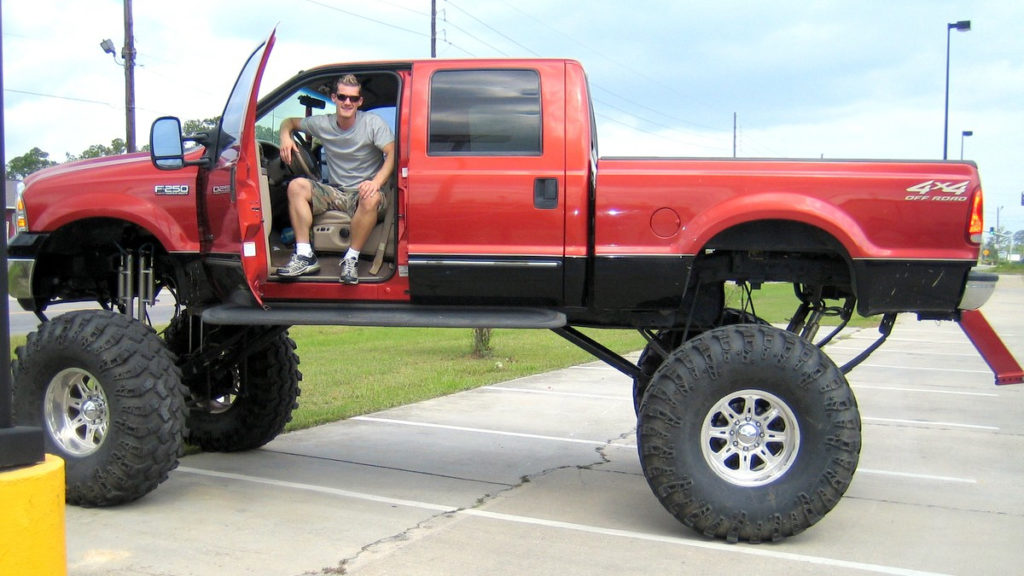Killer Trucks

We are in a weird position in our history of automobiles. As younger generations drive less and demand more public transportation or at least non-owner options for vehicles, the vehicles themselves are becoming significantly more deadly because they are so gigantic and designed with little interest in the safety of others in mind. We see this in all sorts of features on them. How many of you have been blinded because some truck behind you has these tremendously powerful halogen lights shining right at your head? Probably all of us. This is completely counterproductive for any standards of safety. But it also quite represents the “fuck you I’ve got mine” world in which we live. These people only want bright lights for themselves. Anyone who gets blinded and crashes? Well, they should also be driving a gigantic vehicle that wouldn’t be in the path of those lights! It’s all individualized, with no interest in a collective solution to traffic safety issues.
Anyway, these behemoths are designed in ways that might appeal to the consumer, but are deadly.
The hood of a Gladiator is 45.5 inches high, CR’s measurements show. Marketed by Jeep as a vehicle that can “conquer” the road, it’s part of a cultural phenomenon of enduring consumer demand for bigger everyday trucks, some of which don’t come with important safety features as standard equipment. Research has found that modern pickups—which can have tall hoods, large blind spots, and stiff body-on-frame designs, and which can often exceed 4,000 pounds—are particularly deadly in crashes with pedestrians and smaller, lighter vehicles.
Contacted by CR about the crash, Stellantis, Jeep’s parent company, offered its condolences and said its U.S. vehicles met or exceeded safety standards.
A CR analysis of industry data shows that the hood height of passenger trucks has increased by an average of at least 11 percent since 2000 and that new pickups grew 24 percent heavier on average from 2000 to 2018. On some heavy-duty trucks, such as the Ford F-250, the front edge of the hood is now 55 inches or more off the ground—as tall as the roof of some sedans. New CR data shows that drivers have poorer front sight lines, creating a blind spot that can hide a pedestrian or smaller car right in front. “These trends are alarming,” says William Wallace, CR’s manager of safety policy. “Automakers must put safety first for people inside and outside the vehicle.”
More than 42,000 people were killed and 4.8 million seriously injured on U.S. roadways last year, an 8 percent increase from the year before, despite a decrease in miles traveled. Pedestrian fatalities rose 46 percent over the past decade, according to the Governors Highway Safety Association, and the deaths reflect societal inequities. Low-income people are more likely to be struck; elderly pedestrians and wheelchair users are at higher risk of mortality when hit by a vehicle; and Black, Hispanic, and Indigenous people are overrepresented in pedestrian crash fatalities.
The reasons for the rising death toll are complex, with many variables, including more driver distraction. But a growing body of research indicates that the increasing dimensions of pickups may be contributing to the deadliness of crashes, especially when one hits a person, cyclist, or smaller vehicle.
The appeal of these killer vehicles is completely beyond my comprehension. But they sure do appeal.


